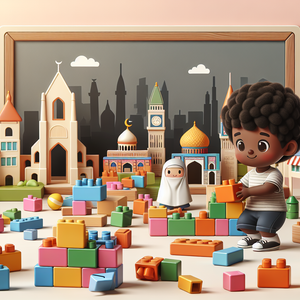The Rise of Freelance UX/UI Designers in a Remote World

As organizations embrace a remote work culture, the demand for freelance UX/UI designers has surged. Companies are increasingly recognizing the benefits of tapping into a global talent pool, allowing them to find specialized skills that may not be available locally. According to a report by Upwork, freelance professionals comprise an estimated 36% of the U.S. workforce, a figure that continues to rise as more individuals seek flexibility and autonomy in their work lives. Freelance UX/UI designers enjoy the freedom to choose their projects, set their schedules, and work from anywhere in the world, which can lead to a more fulfilling professional experience. This newfound flexibility, however, comes with its own set of challenges, including client acquisition, income instability, and the need for self-discipline.
Building a Successful Freelance Career in UX/UI Design
Establishing a recognizable personal brand is crucial for freelancers. Designers should focus on creating a professional online presence that showcases their work, values, and unique design philosophy. A well-designed portfolio website is essential, as it acts as a digital business card for potential clients. Additionally, active participation in design communities and consistent engagement on social media platforms like LinkedIn and Instagram can significantly enhance visibility and credibility.
Networking and Client Acquisition
Freelancers need to build and maintain relationships within the industry to secure clients. Networking can take various forms, including attending virtual design conferences, joining professional organizations, and participating in online forums. Additionally, platforms like Upwork, Fiverr, and Dribbble can serve as valuable resources for finding freelance gigs.
Effective Communication and Collaboration
In a remote work environment, clear communication is key to successful project execution. Freelancers must develop strong communication skills to articulate their design ideas effectively, provide updates, and solicit feedback. Utilizing collaboration tools such as Slack, Zoom, and Figma can facilitate seamless interactions with clients and team members.
Managing Finances and Time
Freelancers must navigate the complexities of managing their finances, including budgeting for inconsistent income and setting aside funds for taxes. Time management is equally important; designers should adopt strategies like the Pomodoro technique or time-blocking to maximize productivity while balancing multiple projects.
Continuous Learning and Adaptation
The UX/UI design field is constantly evolving, with new trends, tools, and methodologies emerging regularly. Freelancers must commit to lifelong learning by engaging with online courses, attending workshops, and staying updated on industry news. This adaptability not only enhances their skill set but also makes them more appealing to potential clients.
The rise of freelance UX/UI designers in a remote world presents both exciting opportunities and significant challenges. For those willing to navigate this evolving landscape, the potential for a rewarding and flexible career is immense. By focusing on building a strong personal brand, networking effectively, honing communication skills, managing finances, and remaining adaptable, aspiring freelance UX/UI designers can carve out a successful niche in this dynamic field. As the world continues to embrace remote work, the freelance design community is likely to flourish, redefining the future of design collaboration and innovation. The ability to work remotely not only enhances individual work-life balance but also enriches the global marketplace with diverse perspectives and talents, paving the way for a more innovative and inclusive design industry.
Freelance UX Designer
Freelance platforms like Upwork, direct clients from startups to established enterprises.
Core Responsibilities
Conduct user research to understand user needs and preferences.
Create wireframes, prototypes, and user flows to communicate design ideas.
Collaborate with clients to iterate on designs based on feedback and testing.
Required Skills
Proficiency in design tools such as Sketch, Adobe XD, or Figma.
Strong understanding of user-centered design principles and usability testing.
Excellent communication skills for client interactions and presenting design concepts.
UI Developer
Tech companies like Google, Microsoft, and various digital agencies.
Core Responsibilities
Transform design prototypes into functional web interfaces using HTML, CSS, and JavaScript.
Implement responsive design techniques to ensure optimal viewing experiences across devices.
Collaborate with UX designers and backend developers to improve user experience and functionality.
Required Skills
Strong coding skills in front-end technologies (HTML5, CSS3, JavaScript).
Familiarity with front-end frameworks such as React or Angular.
Knowledge of design systems and accessibility standards.
UX Researcher
Market research firms, tech startups, and large corporations with in-house UX teams.
Core Responsibilities
Conduct qualitative and quantitative research to gather insights into user behavior and preferences.
Analyze data to identify trends and inform design decisions.
Create user personas and journey maps to guide the design process.
Required Skills
Experience with research methodologies, including surveys, interviews, and usability testing.
Proficiency in data analysis tools such as SPSS or Google Analytics.
Strong analytical and critical thinking skills to interpret research findings.
Interaction Designer
Digital product agencies, e-commerce platforms, and mobile app developers.
Core Responsibilities
Design interactive elements and user interfaces that enhance user experience.
Develop prototypes to test interaction patterns and gather user feedback.
Collaborate with cross-functional teams to ensure designs align with overall product strategy.
Required Skills
Strong understanding of interaction design principles and user-centered design.
Proficiency in prototyping tools like InVision or Framer.
Ability to create engaging visual designs that communicate branding and function.
Product Designer
Tech giants like Apple and Amazon, as well as innovative startups and design consultancies.
Core Responsibilities
Oversee the entire design process, from ideation to implementation, ensuring alignment with user needs and business goals.
Conduct competitor analysis and market research to inform design strategies.
Collaborate closely with engineering teams to deliver high-quality products.
Required Skills
Proficiency in both UX and UI design tools, with a strong portfolio showcasing end-to-end design projects.
Experience in Agile methodologies and working in cross-functional teams.
Strong problem-solving skills and the ability to iterate based on user feedback.


